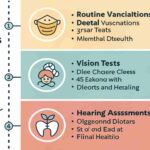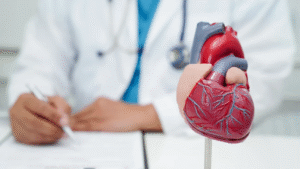Introduction
Diagnosing heart conditions is a detailed process that requires clinical expertise, advanced tools, and patient history. Cardiologists are specialists trained to identify heart-related problems through a step-by-step approach, which includes physical exams, diagnostic tests, and imaging studies. The goal is to detect issues early and guide the patient toward proper treatment.
Review of Medical History and Symptoms
The first step in diagnosing a heart condition is a detailed review of the patient’s medical history. A cardiologist asks about:
- Chest pain
- Shortness of breath
- Palpitations or dizziness
- Past medical conditions (diabetes, hypertension)
- Family history of heart disease
This information helps the doctor identify risk factors and determine which tests may be necessary.
Physical Examination
Cardiologists conduct a thorough physical exam that includes:
- Listening to heart sounds with a stethoscope
- Checking for abnormal rhythms or murmurs
- Measuring blood pressure and pulse
- Looking for swelling in the legs or ankles
- Examining skin color and temperature
These signs can give clues about blood flow, valve function, or fluid retention.
Electrocardiogram (ECG or EKG)
An ECG records the electrical activity of the heart. It helps detect:
- Abnormal rhythms (arrhythmias)
- Previous heart attacks
- Signs of enlarged heart chambers
It is a quick, painless, and essential first-line diagnostic test.
Echocardiogram
An echocardiogram uses ultrasound waves to create live images of the heart. It helps evaluate:
- Heart structure and size
- Pumping strength
- Valve function
- Fluid around the heart
It’s often used when heart murmurs, shortness of breath, or weakness is present.
Stress Test
A stress test measures how well the heart performs under physical stress (usually on a treadmill). It can reveal:
- Reduced blood flow to the heart
- Exercise-induced arrhythmias
- Capacity of the heart during effort
In some cases, chemical agents are used for patients unable to exercise.
Holter Monitor or Event Recorder
These portable devices monitor heart rhythms continuously over 24 hours or more. They help detect:
- Irregular heartbeats
- Intermittent palpitations
- Symptoms not present during a clinic visit
Patients wear the device while going about daily activities.
Cardiac Catheterization
This is an invasive test where a thin tube (catheter) is inserted into an artery and guided to the heart. It allows doctors to:
- Measure blood pressure in heart chambers
- Inject dye to view blocked arteries (angiogram)
- Assess heart valve function
It’s often used before procedures like angioplasty or stenting.
Blood Tests
Blood tests support heart diagnosis by checking for:
- Troponin (a marker of heart muscle damage)
- BNP (linked to heart failure)
- Cholesterol and triglyceride levels
- Blood sugar (linked to diabetes and heart risk)
These help assess risk and detect active damage.
Cardiac MRI and CT Scans
These advanced imaging techniques provide detailed pictures of the heart’s structure. Cardiologists use them to:
- Detect congenital heart defects
- Evaluate damage after a heart attack
- Visualize blocked vessels
They offer high-resolution images that supplement other tests.
Tilt Table Test
Used for patients with fainting episodes, this test evaluates how blood pressure and heart rate respond to changes in position. It helps identify:
- Autonomic nervous system dysfunction
- Certain forms of arrhythmia or low blood pressure
It provides insight into the cause of unexplained syncope (fainting).
Genetic and Family Risk Assessment
For patients with a strong family history of heart disease or inherited conditions, cardiologists may recommend:
- Genetic testing
- Early and frequent screenings
- Lifestyle adjustments to manage inherited risks
This helps with proactive prevention and monitoring.
Conclusion
Cardiologists use a wide range of diagnostic tools to accurately identify heart conditions. From basic exams to advanced imaging and lab work, each step is carefully chosen based on symptoms and medical history. Early diagnosis ensures timely treatment, prevents complications, and improves heart health outcomes. Regular checkups and clear communication with a cardiologist are essential for maintaining a healthy heart.
FAQs
What is the first test a cardiologist usually orders?
An electrocardiogram (ECG) is often the first test to assess heart rhythm and signs of past heart damage.
How do cardiologists detect blocked arteries?
They use stress tests, echocardiograms, or cardiac catheterization with angiography to find blockages.
Can heart disease be diagnosed without symptoms?
Yes, some heart issues are found during routine checkups or screenings, especially in high-risk individuals.
How long does a heart diagnosis take?
It depends on the tests required—some results are immediate (ECG), while others (like MRI) may take longer.
Do all heart conditions require invasive tests?
No, many conditions can be diagnosed with non-invasive methods like ultrasound, blood tests, or Holter monitors.
















